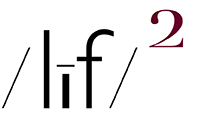(embiggenable)
it’s raining outside ~ (embiggenable)
(embiggenable)
ELSEWHERE ON THE INTERWEB, IT HAS BE POSTULATED, AS AN answer to the question of “…why we don't talk more about the "art" of photography here on the blog instead of going over lots of gear and technical work…”, that:
“…a viewer using a phone or small iPad to view will see none of the technical "features" that might make the image worth looking at.”
“…when we do try to talk about the work we end up with so many different avenues for viewing, each of which is a diminished and poor replica of the original, that it's impossible to make many meaningful assessments.”
At first blush, I would tend to suggest, first and foremost, that the author of the blog in question does not talk about the art of photography cuz that author has a very dim understanding of what it is that constitutes photography as Art. Consequently, the author would be best served by sticking to what he knows, aka: gear. My opinion is offered in light of the fact-one of many-of the author’s suggestion that “technical features” might make an image worth looking at (don’t know whether to laugh or cry at that cringe-worthy idiocy) - a statement in full-blown support of why Bruce Davidson is “not interested in showing my work to photographers anymore…”
Re: with so many different avenues for viewing… it's impossible to make many meaningful assessments.” when trying to writing about on a blog. BS. While the author’s point, re: the diminished image quality-for any number of reasons-of images on the interweb, is true enough, unless a device’s viewing parameters are highly compromised, I believe that there is more than enough visual information in most cases to make a reasonable assessment of a picture’s aesthetic / ”artistic” worth. Enough, so that, you know, you can determine whether or not a picture is “worth looking at”.
I would even go far as to suggest that, under ideal screen viewing conditions-there is a long list of items under the concept of “ideal”-one could even undertake a critical, informed review of a picture.
Is viewing an image on the interweb-under ideal conditions-the same as viewing that image as a print? Short answer, “No.” Slightly longer answer, a qualified “Yes.” inasmuch as most of the visual qualities which distinguish a photograph as Art, especially the idea of form, are easily perceivable on even a less than ideal viewing screen. And, an on-screen viewing of a good photograph can stir virtually all of the feeling, emotion, and thought that a print of the same image can incite.
iMo and experience, I can write that, in the Fine Art World, Photography Division, there are very few who are interested in the technical features of a photograph. That’s cuz they know and have viewed countless number of photographs which display very little in the way of technical features but which, nevertheless, are some of the greatest photographs ever made.
